The Boab - Story Teller - the Indigenous View
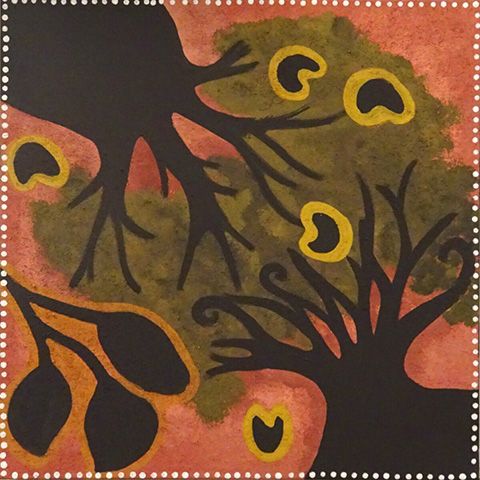
April Nulgit (1995) is the youngest artist from one of the most talented families of Ochre Painters in the East Kimberley. 1 In a future post we will be looking into April Nulgit's artistic lineage but today we will enjoy images of April's boabs and also the visual interpretation of boabs by April's mother, artist Charlene Carrington.
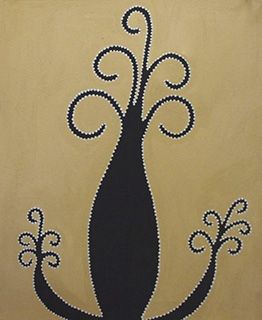
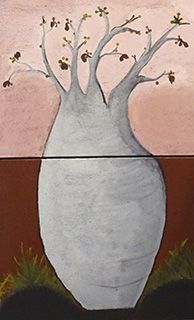
No one is more closely associated with the boab tree than the Indigenous Australians whose ancestors might have brought the first boabs from Africa to the north west of Australia.
The boab is an integral part of the story of Australia’s First Nations People from the north west region as they relied on the boab for food and water from the bark in dry times and the edible leaves and roots during the wet season …
Ju Ju Wilson was not only a well known artist but a much sought after cultural advisor, expert in bush tucker, bush medicines and advisor to those publishing books on these subjects.1 Her Kimberley Boab in ochre on canvas is shown below.
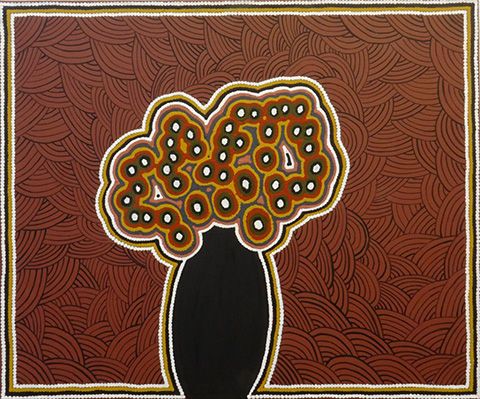
The fibrous inner bark of the boab is used for rope & basket making.. and the dried seed pods are carved and used for ceremonial purposes… which highlights the artistic creativity of our countries First Nations People…
Today the boab tree seed pods are painted or carved for the local tourism industry and the trees are grown for commercial purposes in the Kimberly region….
The carved boab seed pods by Jack Wherra are huge and magnificent. Jack Wherra is in fact one of the few recognized artists of the Kimberley in Western Australia to have carved boab nuts.
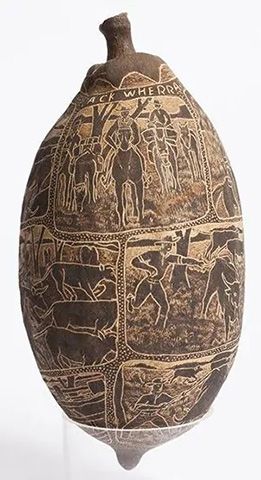
The most collectible Jack Wherra boab nuts have Episodic Panels. They present in the same manner as a comic book and tell a story...Some of his boab nuts some have as many as 12 miniature framed images creating vivid action narratives.2
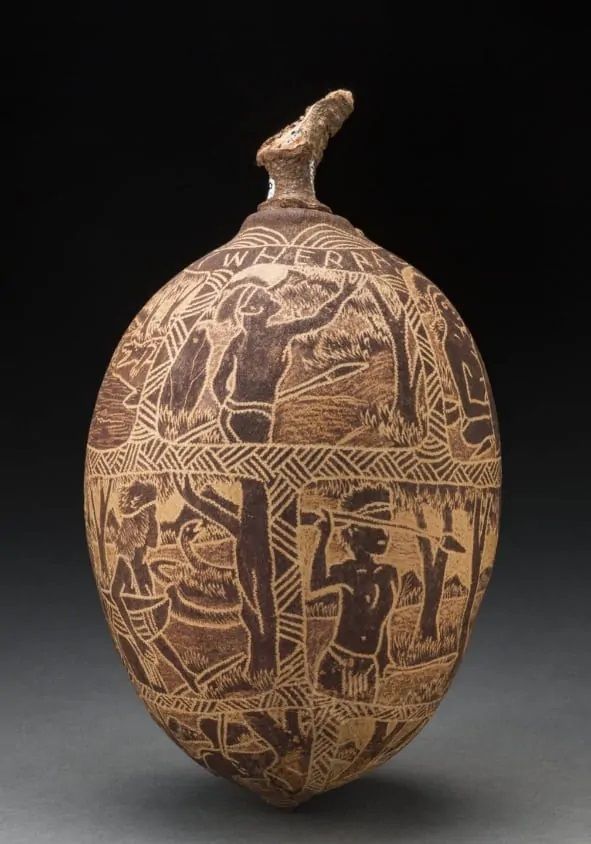
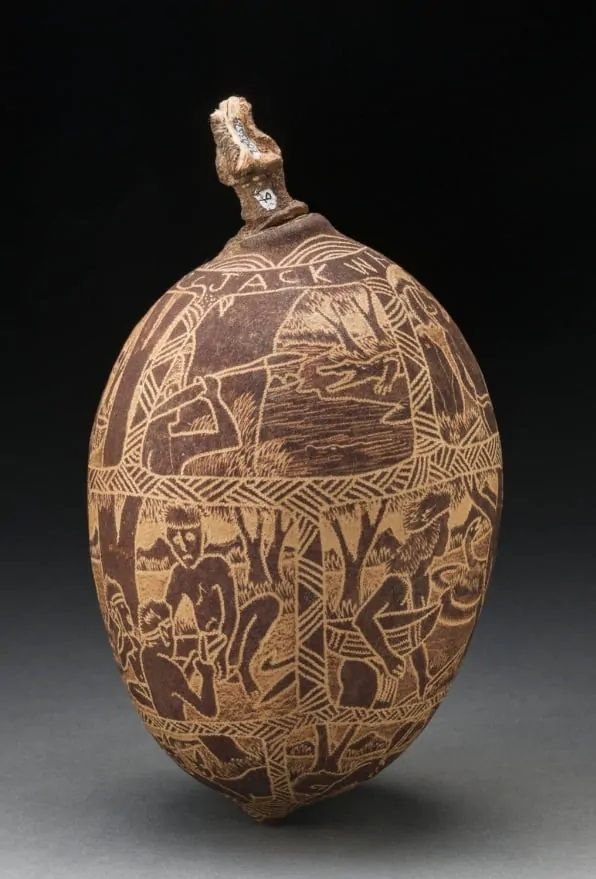
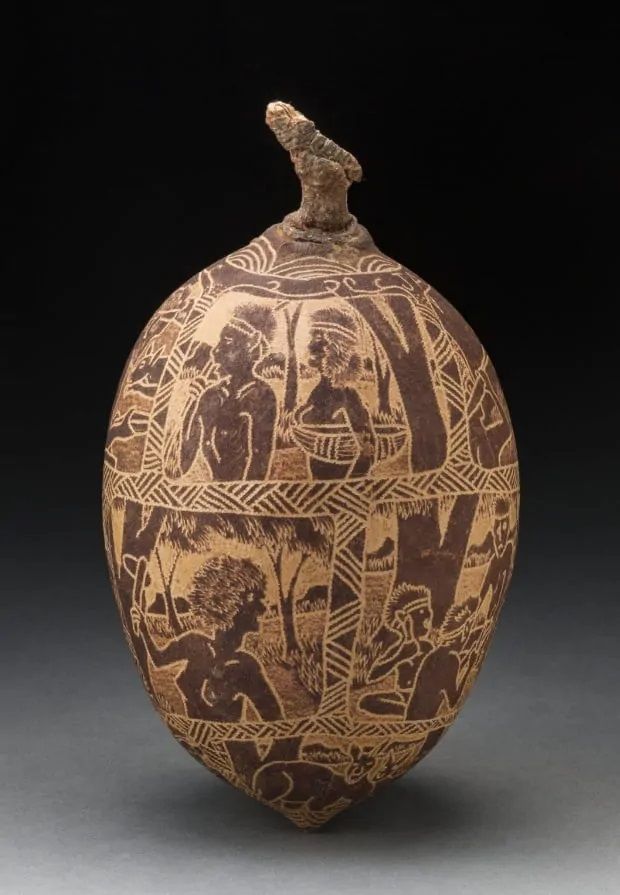
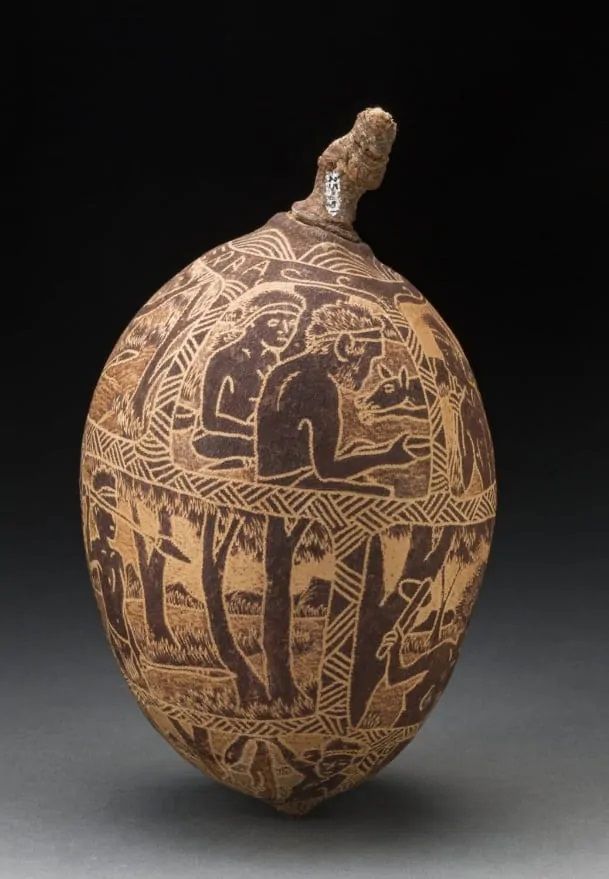
The nut is first rubbed in the sand to remove the outer layer. This removes the fur, revealing the brownish harder shell. Using a sharp object the softer brown furry skin of the nut is removed. The technique is like a linocut, revealing layers of the creamy hard shell beneath.2
Paddy (Jampin)Jaminji pioneered what is now known as the East Kimberley School of painting, (and his works) often featured big blocks of single colour, outlined with round white dots, rounded hill shapes and stylised boab trees. He usually painted on board, but sometimes used canvas and made sculptures.3
Paddy's painting of a boab tree (below) is untitled and at first glance unusual with the gaping hole in the centre. This painting represents a very tragic association the indigenous peoples of the Kimberleys have with the boab - as one such tree was used as a prison.
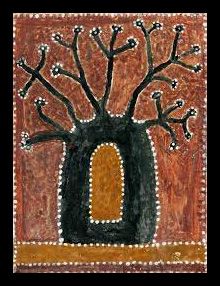
As story tellers the boabs have much to offer. In 2020 Australian archaeologists launched a project to find Australia's lost stories carved into iconic centuries-old trees in the Kimberley in Western Australia. These Australian boab trees record the stories of Indigenous and non-Indigenous people in the region, including from the time of the first European contact, that have not been captured in any other form.5
The project seeks to learn more about such things as how boabs... act as markers of landscape and place... and will record both Indigenous and non-Indigenous carvings on boabs, to learn about this little-known traditional Indigenous cultural and artistic practice...5 plus a great deal more.
Let's conclude today and say farewell to the boab for now with a couple more Indigenous paintings of the enigmatic, the magestic, the cheeky boab.
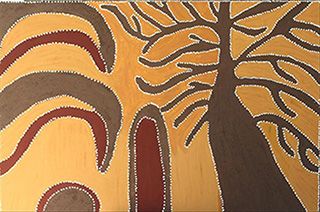
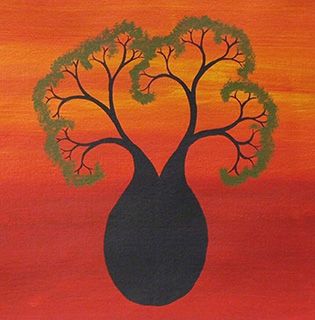
The argument continues questioning how the baobab came to arrive in Australia and became the boab tree. If you're into this discussion you might like to check out this excellent article in the blog The Heart Thrills.
And tomorrow we are going back to Africa with Jane who is going to share some of her African sculptures.
Credits
1. aboriginal-art-australia.com
2. aboriginal-bark-paintings.com/jack-wherra
3. portrait.gov.au
4. pinterest.com.au
5. anu.edu.au/news/all-news/the-lost-australian-stories-etched-in-iconic-ancient-trees
6. artatrium.com.au

